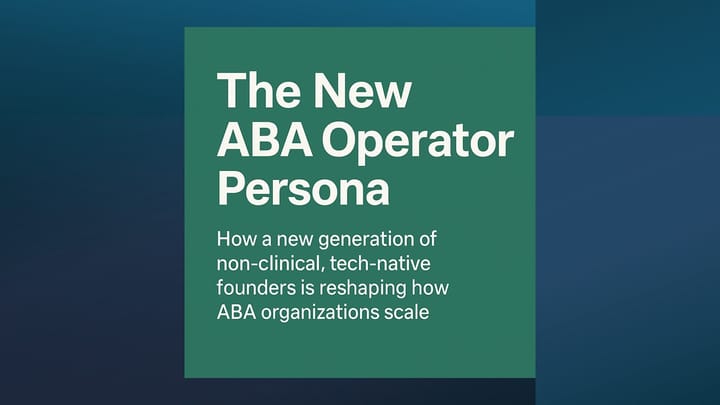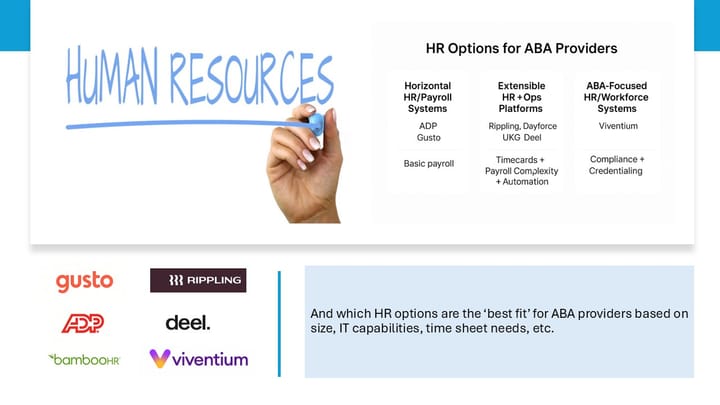🌍 Can U.S. Autism Tools Go Global? Only If They Evolve the Playbook.

The U.S. autism care market is unique: shaped by insurance mandates, high-intensity ABA therapy, and a web of billing, authorization, and documentation requirements. That complexity has fueled an ecosystem of tech platforms built to automate, streamline, and scale—but mostly for one specific model: clinic-based ABA services reimbursed by U.S. insurers.
So what happens when those same platforms look abroad?
The answer: they stall. But they don’t have to.
🇺🇸 First, What Makes U.S. Autism Tech So Inflexible?
Most U.S.-centric autism platforms are optimized for:
- Revenue cycle logic (claims, denials, authorizations)
- Session-based scheduling tied to billing
- ABA-specific clinical workflows
- Compliance standards tied to U.S. payors and licensure
These are essential at home—but in many other countries:
- The state or family pays directly
- ABA is just one of many accepted models
- Documentation is required, but not shaped by billing needs
As a result, many U.S. platforms over-index on claims workflows and under-deliver on care coordination, parent-facing tools, and flexible care models.
🌐 Global Autism Care Models: Different Foundations
🇪🇺 Western Europe
- Care is primarily publicly funded
- ABA is often marginalized in favor of developmental or eclectic approaches
- Private clinics exist but are smaller and serve higher-income families
- Opportunity lies in care team collaboration, parent engagement, and progress tracking, not claims automation
🇨🇦 Canada
- Provinces determine funding models—some use direct-to-family budgets
- ABA is available but increasingly coexists with play-based or developmental therapies
- Platforms must support hybrid service delivery and parent-facing tools
🇦🇺 Australia
- Under the NDIS, families get individual budgets to select providers
- Multidisciplinary care is common: ABA, OT, ST, psychology
- Providers compete on value and coordination, not volume of hours
- Platforms that can integrate multiple disciplines and help providers demonstrate outcomes have an edge
🌍 Middle East
- Autism therapy is usually paid out of pocket
- ABA is growing in popularity, often led by expat clinicians
- Clinical staff may be limited, and caregivers play an active role
- The opportunity lies in platforms that support caregiver coaching, remote supervision, and multilingual documentation
🇲🇽 Latin America: Rising Demand, Fragmented Access
Autism awareness and diagnosis are increasing rapidly across Latin America, but service availability still lags. Key characteristics of the region include:
- Public systems with long waitlists and limited coverage
- Private clinics serving middle- and upper-income families
- A growing population of parents seeking structured, evidence-based care, often modeled on U.S. ABA practices
While reimbursement is rare, families are willing to pay out of pocket for quality services—especially in countries like Mexico, Chile, and Colombia. Some U.S. ABA providers and training institutes already have affiliates or partners in the region.
Tech opportunities include:
- Spanish-language clinical tools
- Platforms that support caregiver-led interventions
- Low-overhead, mobile-accessible systems that don’t depend on complex RCM
🛠️ How U.S. Platforms Can Grow Beyond U.S. Borders
1. Move from Claim Support to Care Support
Platforms that excel at managing insurance workflows must shift to supporting the actual delivery of care—especially where claims aren’t part of the equation.
✅ Prioritize:
- Session documentation that’s readable by caregivers
- Progress summaries, goal tracking, and outcome dashboards
- Clinical oversight and fidelity tracking—not just SOAP notes
2. Embrace Multidisciplinary Care
In many countries, autism therapy is not just ABA. Occupational therapy, speech-language pathology, and developmental education are often just as important.
✅ Prioritize:
- A unified care plan across ABA, OT, and ST
- Role-based interfaces for different clinician types
- Shared goal frameworks and progress views
3. Design for the Caregiver, Not Just the Clinic
Outside the U.S., parents are often a critical part of the care team. That’s especially true in systems without broad clinical coverage.
✅ Prioritize:
- Parent dashboards and session summaries
- Home goals, practice reminders, and feedback loops
- Mobile-first design with multilingual support
📈 A New Global Opportunity
The global autism market is growing—particularly in regions like the Middle East, Southeast Asia, and Latin America. But platforms that export the U.S. model without adaptation are likely to underperform.
The platforms that succeed will:
- Support cross-disciplinary teams
- Engage caregivers as collaborators
- Work with or without a billing engine
- And adapt to different regulatory, cultural, and care delivery environments
The real question isn’t whether the world is ready for U.S. autism tech.
It’s whether U.S. autism tech is ready to evolve for the world.



